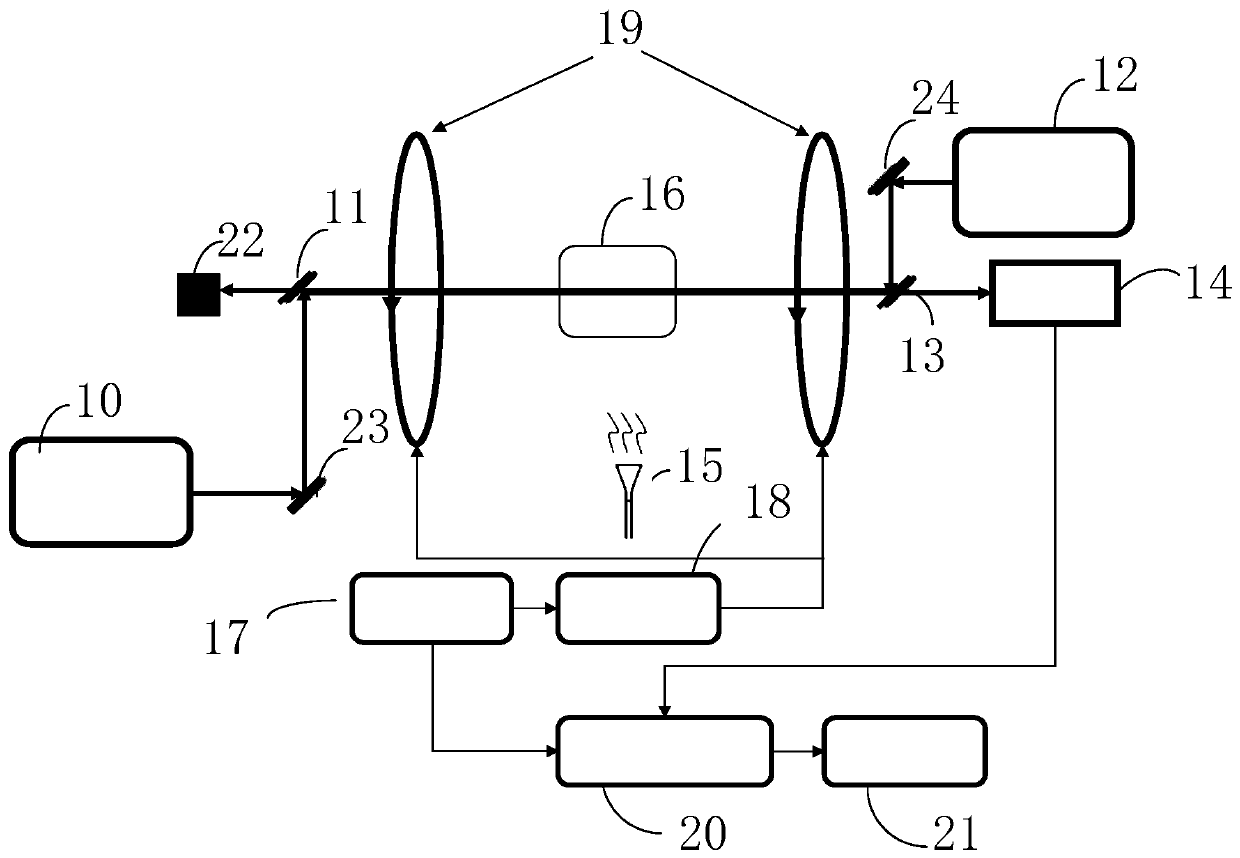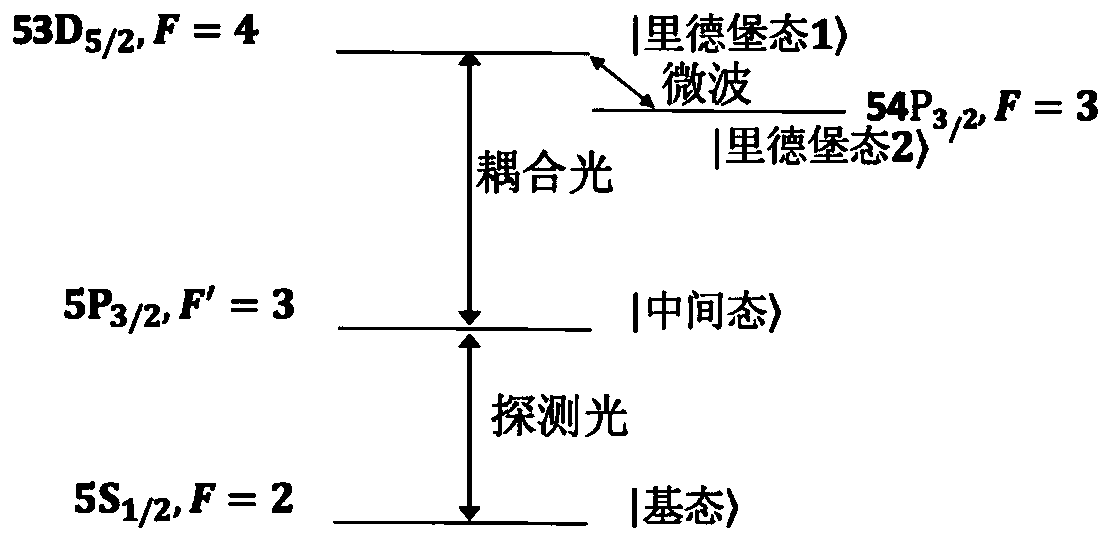Method and device for improving microwave electric field intensity measurement signal-to-noise ratio through Zeeman frequency modulation
A technology of electric field strength and signal-to-noise ratio, applied in the field of weak signal detection, can solve problems such as increasing system complexity, and achieve the effect of improving the measurement signal-to-noise ratio and improving the signal-to-noise ratio
- Summary
- Abstract
- Description
- Claims
- Application Information
AI Technical Summary
Problems solved by technology
Method used
Image
Examples
Embodiment Construction
[0026] In order to make the technical problems solved by the present invention, the technical solutions adopted and the technical effects achieved clearer, the technical solutions of the embodiments of the present invention will be further described in detail below in conjunction with the accompanying drawings. Apparently, the described embodiments are only some of the embodiments of the present invention, but not all of them. Based on the embodiments of the present invention, all other embodiments obtained by persons of ordinary skill in the art without making creative efforts belong to the protection scope of the present invention.
[0027] refer to figure 1 , figure 1 Schematic diagram of the optical path of the device for Zeeman frequency modulation to improve the signal-to-noise ratio of microwave electric field strength measurement. The device comprises: a first laser 10, a second laser 12, a first dichroic mirror 11, a second dichroic mirror 13, a first reflector 23, ...
PUM
 Login to View More
Login to View More Abstract
Description
Claims
Application Information
 Login to View More
Login to View More - R&D
- Intellectual Property
- Life Sciences
- Materials
- Tech Scout
- Unparalleled Data Quality
- Higher Quality Content
- 60% Fewer Hallucinations
Browse by: Latest US Patents, China's latest patents, Technical Efficacy Thesaurus, Application Domain, Technology Topic, Popular Technical Reports.
© 2025 PatSnap. All rights reserved.Legal|Privacy policy|Modern Slavery Act Transparency Statement|Sitemap|About US| Contact US: help@patsnap.com



